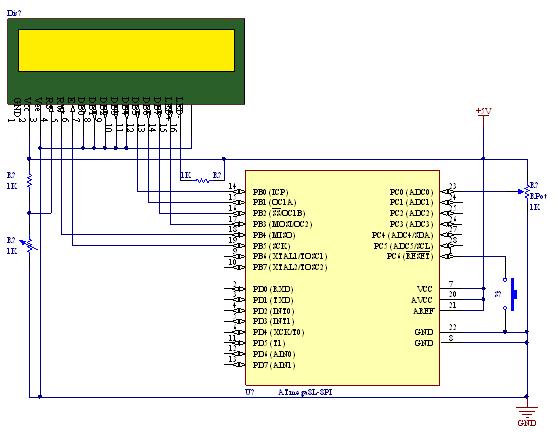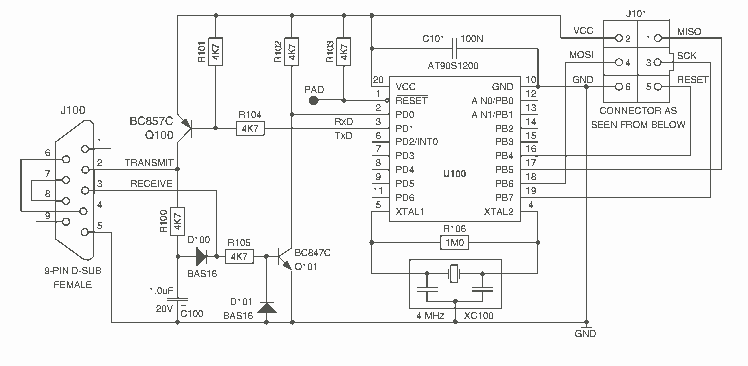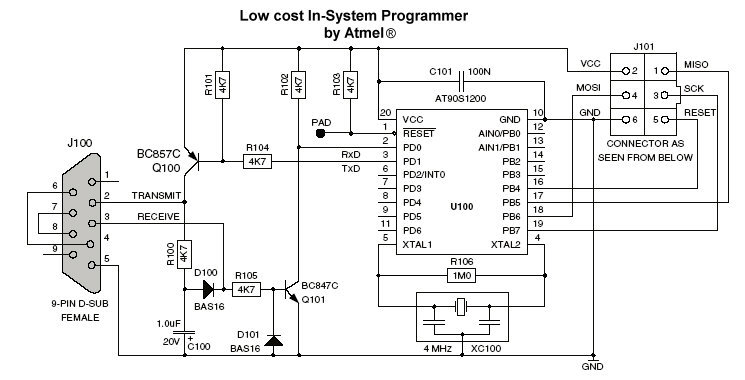
AVR Microcontrollers in Linux

A microcontroller is a single-chip computer that includes internal RAM, ROM, timers, counters, interrupt circuitry, I/O ports, analog comparators, serial USARTs, analog-to-digital converters, watchdog timers, and a RISC architecture. Unlike microprocessors, which require additional components such as RAM and ROM for programming, microcontrollers are more self-contained. To program a microcontroller effectively, it is essential to have a thorough understanding of its architecture, which can be gained by consulting the datasheet for the specific microcontroller in use. Examples of Atmel AVR microcontrollers include the ATmega103, ATmega603, ATmega8, ATmega48, ATmega88, ATmega8515, ATmega8535, ATmega16, ATmega161, ATmega162, ATmega163, ATmega165, ATmega168, ATmega169, ATmega32, ATmega323, ATmega325, ATmega3250, ATmega64, ATmega645, ATmega6450, and ATmega128. Additionally, the binutils package is used for manipulating binary and object files created for the AVR architecture, while avr-libc is the standard library for developing C programs for Atmel AVR microcontrollers. These packages can be downloaded, configured, and installed, with availability in Debian or Ubuntu distributions through the apt or synaptic package manager. A manual about avr-libc is recommended for better programming understanding, along with referring to the datasheets for various AVR microcontrollers. The provided code snippet demonstrates a simple LED blinking program using the ATmega microcontroller, which utilizes the AVR I/O library and the built-in delay function to toggle an output pin.
The ATmega microcontroller circuit typically incorporates a 4 MHz crystal oscillator connected between pin 9 and pin 10, serving as the external clock source. This oscillator is crucial for the microcontroller's timing operations, ensuring that the chip operates at the specified frequency. The microcontroller's pins are configured as either inputs or outputs through the Data Direction Register (DDRC), where setting a bit to '1' designates the corresponding pin as an output. In the provided code, PORTC is manipulated to control the state of pin PC2, which is designated as the output pin for the LED. The program continuously toggles the state of this pin with a 100 ms delay between transitions, resulting in the LED blinking on and off.
The GPIO (General Purpose Input/Output) functionality of the microcontroller allows for flexible interfacing with various peripherals. Each pin can be configured as an input to read sensor data or as an output to control devices such as LEDs, motors, or relays. The bidirectional nature of the pins necessitates careful management of the DDRC register to avoid unintended behavior.
The assembly code generated by the GNU C compiler for the ATmega family is optimized to facilitate straightforward manipulation of the microcontroller's registers. For instance, writing `PORTC = 0xFF` sets all pins on PORTC to a high state, while a bitwise operation can selectively control individual pins. The use of the _delay_ms function simplifies timing management, allowing for precise control of delays in the program execution.
Overall, the ATmega microcontroller's architecture, combined with the AVR programming environment, provides a robust platform for developing a wide range of embedded applications. Understanding the intricacies of the microcontroller's operation and programming environment is essential for leveraging its full capabilities in practical projects.A microcontroller is a single-chip computer. It has internal RAM, ROM, timers, counters, interrupt circuitry, I/O ports, analog comparators, serial USARTs, analog to digital converters, watchdog timers, and a RISC architecture. When you are using a microprocessor, you cannot program it alone. You need other components, like RAM, ROM, timers, etc. For programming, you should know its architecture thoroughly: You must read the datasheet for your microcontroller. atmega103, atmega603, atmega8, atmega48, atmega88, atmega8515, atmega8535, atmega16, atmega161, atmega162, atmega163, atmega165, atmega168, atmega169, atmega32, atmega323, atmega325, atmega3250, atmega64, atmega645, atmega6450, atmega128.
binutils: Programs to manipulate binary and object files that may have been created for Atmel`s AVR architecture. This package is primarily for AVR developers and cross-compilers. avr-libc: Standard library used for developing C programs for Atmel AVR microcontrollers. This package contains static libraries, as well as needed header files. You download the above packages untar, configure, and install it. If you are using Debian or Ubuntu, these packages are available in your distribution: Install them using apt or synaptic package manager.
Before proceeding, have a look at this manual about _avr-libc_, which will help you program better, and understand. Also, refer to the datasheets for the various AVR microcontrollers. /* ledblink. c, an LED blinking program */ #include #include void sleep(uint8_t millisec) { while(millisec) { _delay_ms(1);/* 1 ms delay */ millisec-; } } main() { DDRC |=1<
Thus, writing `PORTC=0xff` will result in the compiler generating machine code that writes 0xff to I/O port C, which will set all port C pins to logic high. Because ports are bidirectional, we must decide whether each pin should act as input or output. If the i`th bit of a register called DDRC (data direction register C) is 1, then the i`th pin of PORTC`s i`th pin will be an output.
Otherwise, it will act as an input pin. (Note that pin and bit numbers start at zero. ) To make an LED blink, you have to make a pin high, then low. (Here, we use PORTC`s 2nd port. That is, PC2 will be the 25th pin. ) There should be a delay between the two. This is what the rest of the code does. For the delay, we use built-in function _delay_ms(1), which causes a 1 ms delay. :1000000012C02BC02AC029C028C027C026C025C0C6 :1000100024C023C022C021C020C01FC01EC01DC0DC :100020001CC01BC01AC011241FBECFE5D4E0DEBF28 :10003000CDBF10E0A0E6B0E0EAE8F0E002C0059035 :100040000D92A036B107D9F710E0A0E6B0E001C0EC :100050001D92A036B107E1F70CC0D2CF282FE4ECF7 :10006000F9E004C0CF010197F1F721502223D1F725 :100070000895CFE5D4E0DEBFCDBFA29AAA9884E66A :0A008000EDDFAA9A84E6EADFF9CF6B :00000001FF This is the circuit for the atmega8 microcontroller. Pin 9 & pin 10 are connected by a 4 MHz crystal oscillator, which is the external clock. The bottom right connector is for a parallel port. 🔗 External reference
The ATmega microcontroller circuit typically incorporates a 4 MHz crystal oscillator connected between pin 9 and pin 10, serving as the external clock source. This oscillator is crucial for the microcontroller's timing operations, ensuring that the chip operates at the specified frequency. The microcontroller's pins are configured as either inputs or outputs through the Data Direction Register (DDRC), where setting a bit to '1' designates the corresponding pin as an output. In the provided code, PORTC is manipulated to control the state of pin PC2, which is designated as the output pin for the LED. The program continuously toggles the state of this pin with a 100 ms delay between transitions, resulting in the LED blinking on and off.
The GPIO (General Purpose Input/Output) functionality of the microcontroller allows for flexible interfacing with various peripherals. Each pin can be configured as an input to read sensor data or as an output to control devices such as LEDs, motors, or relays. The bidirectional nature of the pins necessitates careful management of the DDRC register to avoid unintended behavior.
The assembly code generated by the GNU C compiler for the ATmega family is optimized to facilitate straightforward manipulation of the microcontroller's registers. For instance, writing `PORTC = 0xFF` sets all pins on PORTC to a high state, while a bitwise operation can selectively control individual pins. The use of the _delay_ms function simplifies timing management, allowing for precise control of delays in the program execution.
Overall, the ATmega microcontroller's architecture, combined with the AVR programming environment, provides a robust platform for developing a wide range of embedded applications. Understanding the intricacies of the microcontroller's operation and programming environment is essential for leveraging its full capabilities in practical projects.A microcontroller is a single-chip computer. It has internal RAM, ROM, timers, counters, interrupt circuitry, I/O ports, analog comparators, serial USARTs, analog to digital converters, watchdog timers, and a RISC architecture. When you are using a microprocessor, you cannot program it alone. You need other components, like RAM, ROM, timers, etc. For programming, you should know its architecture thoroughly: You must read the datasheet for your microcontroller. atmega103, atmega603, atmega8, atmega48, atmega88, atmega8515, atmega8535, atmega16, atmega161, atmega162, atmega163, atmega165, atmega168, atmega169, atmega32, atmega323, atmega325, atmega3250, atmega64, atmega645, atmega6450, atmega128.
binutils: Programs to manipulate binary and object files that may have been created for Atmel`s AVR architecture. This package is primarily for AVR developers and cross-compilers. avr-libc: Standard library used for developing C programs for Atmel AVR microcontrollers. This package contains static libraries, as well as needed header files. You download the above packages untar, configure, and install it. If you are using Debian or Ubuntu, these packages are available in your distribution: Install them using apt or synaptic package manager.
Before proceeding, have a look at this manual about _avr-libc_, which will help you program better, and understand. Also, refer to the datasheets for the various AVR microcontrollers. /* ledblink. c, an LED blinking program */ #include
Thus, writing `PORTC=0xff` will result in the compiler generating machine code that writes 0xff to I/O port C, which will set all port C pins to logic high. Because ports are bidirectional, we must decide whether each pin should act as input or output. If the i`th bit of a register called DDRC (data direction register C) is 1, then the i`th pin of PORTC`s i`th pin will be an output.
Otherwise, it will act as an input pin. (Note that pin and bit numbers start at zero. ) To make an LED blink, you have to make a pin high, then low. (Here, we use PORTC`s 2nd port. That is, PC2 will be the 25th pin. ) There should be a delay between the two. This is what the rest of the code does. For the delay, we use built-in function _delay_ms(1), which causes a 1 ms delay. :1000000012C02BC02AC029C028C027C026C025C0C6 :1000100024C023C022C021C020C01FC01EC01DC0DC :100020001CC01BC01AC011241FBECFE5D4E0DEBF28 :10003000CDBF10E0A0E6B0E0EAE8F0E002C0059035 :100040000D92A036B107D9F710E0A0E6B0E001C0EC :100050001D92A036B107E1F70CC0D2CF282FE4ECF7 :10006000F9E004C0CF010197F1F721502223D1F725 :100070000895CFE5D4E0DEBFCDBFA29AAA9884E66A :0A008000EDDFAA9A84E6EADFF9CF6B :00000001FF This is the circuit for the atmega8 microcontroller. Pin 9 & pin 10 are connected by a 4 MHz crystal oscillator, which is the external clock. The bottom right connector is for a parallel port. 🔗 External reference



.jpg)

